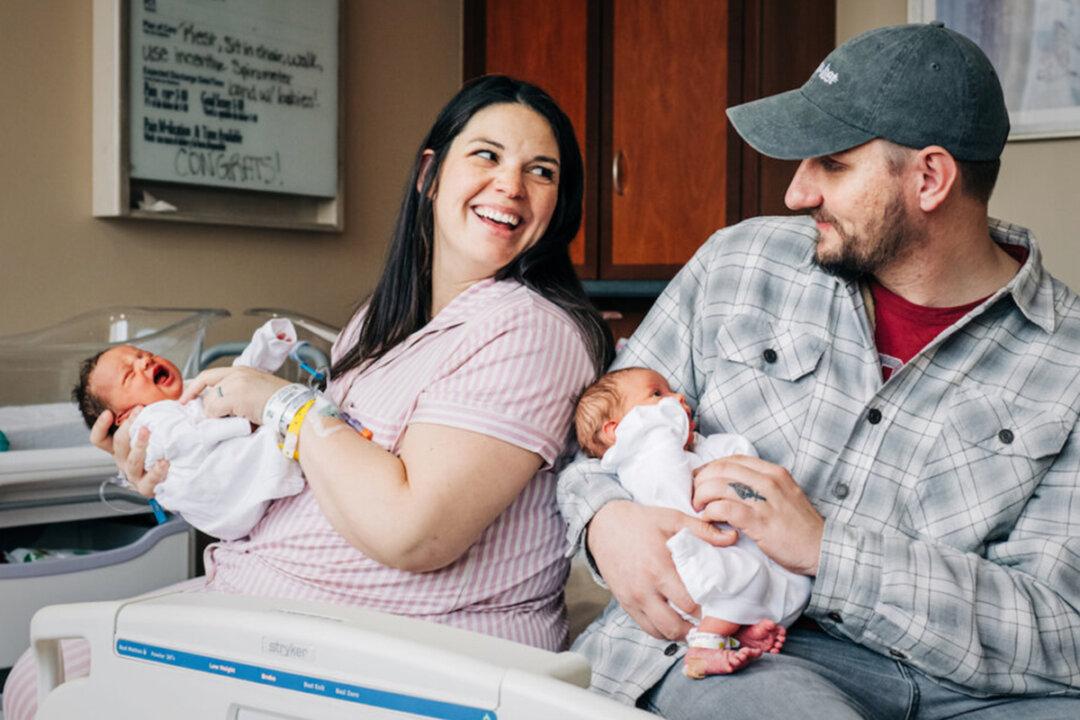A woman with a rare double uterus has given birth to two healthy babies, each growing in a separate uterus. The baby girls were born 10 hours apart, on two different days.
Mom Kelsey Hatcher, 32, gave birth to twins Roxi and Rebel at the University of Alabama at Birmingham Hospital (UAB) on Dec. 19 and Dec. 20 via scheduled induction. It was Mrs. Hatcher’s fourth pregnancy–she and her husband, Caleb Hatcher, already have three children under the age of 7–and her first time expecting a baby in both uteruses simultaneously. This rare pregnancy is considered a one-in-a-million occurrence and is known as dicavitary pregnancy.





